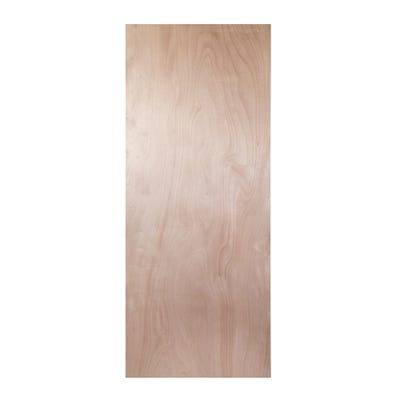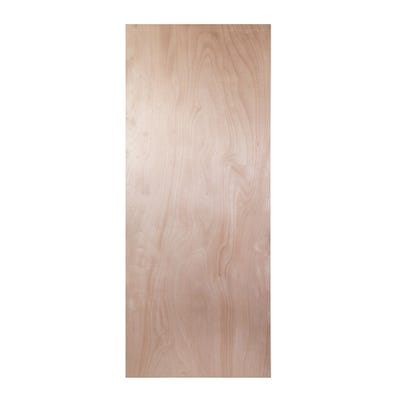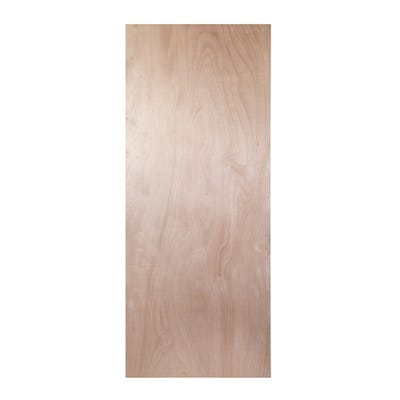Bulk Deal Door Blanks
At Builder Depot, we offer a range of durable door blanks for internal and external applications. Our fire door blanks are flame resistant, preventing fire spread for up to 30 minutes (FD30) or 60 minutes (FD60), making them ideal for safeguarding your property. Plus, you can take advantage of our bulk buy deals to save when you order more. Shop now for top-quality, door blanks that are built to last at Builder Depot.
Read More Read LessNow Shopping By: 1 Applied Filters
-
 Bulk Buy Saving
£2,720.57 Inc VAT£100.76 Per Door
Bulk Buy Saving
£2,720.57 Inc VAT£100.76 Per Door -
 Bulk Buy Saving
£3,594.96 Inc VAT£211.46 Per Door
Bulk Buy Saving
£3,594.96 Inc VAT£211.46 Per Door
What is a door blank?
A door blank is an unfinished door. That means it does not come with any finishes (like paint or veneer), pre-drilled holes for handles or locks, cutouts, panels, glazing, or hardware. They also do not come in standard door sizes, but are usually larger for trimming down. This allows you to completely customise it.
Door blanks are made from solid core materials like hardwood or plywood, making them strong and durable. Options such as FD30 and FD60 fire door blanks provide fire protection for homes and businesses by slowing the spread of flames and smoke.
Some blanks also feature a hardwood lipping—a solid edge that reinforces the door's sides, allowing it to be trimmed without weakening its structure.
How is a door blank different from a standard door?
A standard door has a decorative finish and is ready to install, while a door blank is a plain, solid core slab that can be personalised. This gives you more flexibility for trimming and adjusting, unlike pre-made doors that come with fixed sizes and fittings.
What are the benefits of using a door blank?
When doors are available pre-finished, you might wonder why you would choose a blank door instead. Below are some of the most common reasons to pick blanks over standard doors:
- Customisable: Door blanks can be cut to size and decorated in any way, unlike pre-made doors that have fixed sizes, trimming allowances and designs.
- Fire-rated options: Many door blanks are fire-rated, offering better fire protection for a lower price than standard doors.
- Versatility: As they have no features, door blanks are incredibly versatile and can be used for many applications.
- Durability: Blank doors have a solid core construction, making them more durable than hollow or semi-solid core pre-made doors.
What are door blanks used for?
Normally, door blanks are customised before installation. So, it could be hard to tell when and what they are used for. Often, they are installed when fire-rated doors are mandatory, and in projects requiring bespoke finishes, soundproofing, or reinforced security.
Additionally, door blanks are useful in renovations or retrofits where exact sizing and modifications are needed to fit existing frames. This is because standard doors come in a limited number of sizes and have strict trimming allowances.
What materials are used for door blanks?
Door blanks can be made from hardwood, plywood, MDF, oak, or other timber types.
Hardwood door blanks are best for high-traffic areas needing maximum durability and impact resistance.
An oak door blank is used for its aesthetic appeal and durability, making it ideal for high-end interiors.
Plywood door blanks are great for budget-friendly projects requiring strength and moisture resistance.
An MDF door blank provides a smooth finish for paint finishes and is suitable for interior applications where cost-effectiveness and sound insulation are important.
What size are door blanks?
Door blanks are available in a range of sizes to suit different applications, with common options including 8x4 and 7x3. They also come in various thicknesses, such as 44mm and 54mm.
The benefit of door blank sizes over standard doors is that they can be cut with no maximum trimming tolerances. Larger door blanks can also easily fit entryways that are larger than standard door sizes for enhanced versatility.
Can door blanks be used externally?
Yes, door blanks can be used externally, but they require additional protection. For external use, you should treat or finish hardwood door blanks with a weather-resistant coating, such as a high-quality exterior-grade paint, to prevent damaging the wood from moisture, UV rays, and temperature changes.
Fire-rated door blanks can also be used externally if they meet relevant waterproofing standards.
How do you finish a door blank?
You can paint, veneer, or seal a door blank, depending on where you will use it. Painting gives a smooth look, while oak veneer or plywood finishes improve the style.
If you are using an external fire door blank, it’s important to seal it properly to protect it from moisture and extend its life. Ironmongery, including door handles, hinges, locks and latches, will also likely be required.
What is a fire door blank?
A fire door blank is a solid door slab made to resist fire. It is made from materials like timber, MDF, or particleboard and has a fire-resistant core that can withstand heat for 30 or 60 minutes (FD30 or FD60).
Fire door blanks are unfinished and need to be customised with a fire-rated frame, seals, and hardware. They are used in buildings to stop the spread of fire and smoke, helping to protect people and property.
Common fire door blank thicknesses include 44mm fire door blanks and 54mm fire door blanks, which are widely used in homes and businesses.
Do fire door blanks need lipping?
When you trim blanks, they require lipping to protect the door’s edges. Lipping is a thin strip of wood or other material that strengthens the edges of the door and gives it a neat finish.
It also protects the door’s core from damage. For fire-rated doors, you must use fire-resistant lipping to maintain the fire rating.



